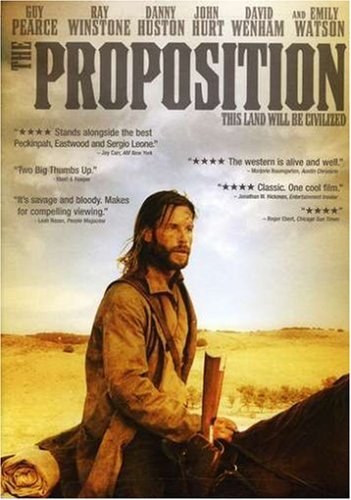All Nonfiction
- Bullying
- Books
- Academic
- Author Interviews
- Celebrity interviews
- College Articles
- College Essays
- Educator of the Year
- Heroes
- Interviews
- Memoir
- Personal Experience
- Sports
- Travel & Culture
All Opinions
- Bullying
- Current Events / Politics
- Discrimination
- Drugs / Alcohol / Smoking
- Entertainment / Celebrities
- Environment
- Love / Relationships
- Movies / Music / TV
- Pop Culture / Trends
- School / College
- Social Issues / Civics
- Spirituality / Religion
- Sports / Hobbies
All Hot Topics
- Bullying
- Community Service
- Environment
- Health
- Letters to the Editor
- Pride & Prejudice
- What Matters
- Back
Summer Guide
- Program Links
- Program Reviews
- Back
College Guide
- College Links
- College Reviews
- College Essays
- College Articles
- Back
The Proposition MAG
By the 1960s, the Western had begun to grow boring to most moviegoers. Instead of cinematic and stylistic films, the Western had become nothing more than a penny-dreadful genre. However, in 1964, a little-known director made a brand-new kind of Western, with a humble budget and an unknown actor for the lead. While this could have been just another “quick cash” film, its style, brutality, and rich characters made it one of the best Westerns – if not one of the best films – of all time. The movie, “A Fistful of Dollars,” paved the way for Clint Eastwood's career and helped make the director, Sergio Leone, one of the greatest the world has ever seen. This success led to many imitations, but none has been able to reach this cinematic genius.
“The Proposition,” directed by relative unknown John Hillcoat, is the only Western I've seen that's even close to a Sergio Leone Western. The atmosphere, the brutality, the black and gray morality, the characters, the romanticism, the pacing – this film is just fantastic. It tries to bring the same shock and innovation of Leone films to an audience now more desensitized to violence – and it succeeds. “The Proposition” was able to shock while creating a great narrative.
The film's setting is also original. Instead of the American Old West, it is in the Australian outback during the 1880s. This change also adds some green to the typical Western wasteland, which is an interesting visual change that ensures the wasteland never feels too barren.
The characters as well are rich and interesting. They're not necessarily new, but old archetypes are just as fascinating and suave as they were 60-plus years ago. They include the outlaw brothers, the lawman seeking justice, the heroine fearing the future, the corrupt politician, and so on, but all are given a fresh breath of life thanks to the wonderful performances and Hillcoat's engrossing direction.
This film does have a few knocks in its near-perfect execution. For starters, it is pretty slow at times, which wouldn't be that much of a problem if it weren't for some of the character choices. I don't want to spoil anything, but let's just say our lead character spends a lot of time in a certain area – like, practically the entire second half of the film. There is some good character drama, but it feels like the movie just wanted to add more screen time.
Regardless of that small pacing error in the second half, the rest of the film is just amazing. The score is melodramatic, yet just as innovative as the famed Ennio Morricone's scores in Leone's Westerns. The characters are great, the visuals have flair and grit, and the brutality brings realism to the setting. It's no Leone picture, but “The Proposition” certainly comes close.
Similar Articles
JOIN THE DISCUSSION
This article has 1 comment.


48 articles 7 photos 29 comments
Favorite Quote:
"Inspiration exists, but it has to find us working."<br /> — Pablo Picasso